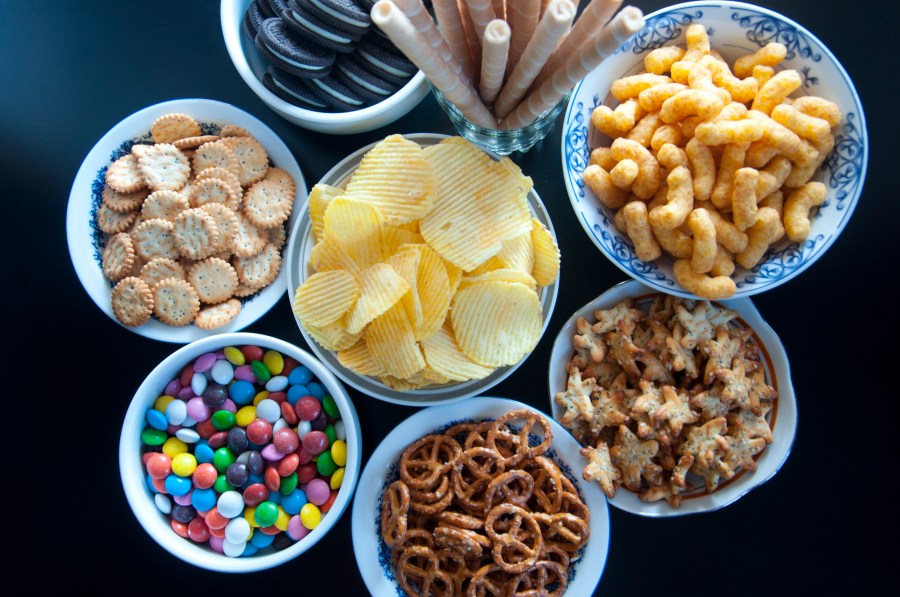Tampa (BLOOM) – There’s nothing quite like a bowl of mac and cheese or a slice of warm apple pie to make us feel better. Comfort foods have a special place in our hearts, and it turns out that there’s a scientific reason why we love them so much.
In this article, we’ll explore the psychology, biology, social, and evolutionary aspects of our cravings for comfort food.
The Psychological Aspect of Comfort Food
Our emotional connection to food is undeniable. Certain foods can trigger memories of happy times or comfort from stressful situations. This is why we often crave the foods we ate as children, such as chicken noodle soup or grilled cheese sandwiches. In fact, research shows that the brain releases dopamine, a feel-good neurotransmitter, when we eat our favorite comfort foods.
The Biological Aspect of Comfort Food
It’s not just our emotions that are at play. Our brains also have a biological response to certain foods. Studies show that foods high in sugar and fat can activate the brain’s reward center, releasing dopamine and serotonin. This is why we often crave sweet or fatty foods when we’re feeling down. However, it’s important to note that the effects of these foods on the brain are temporary and can lead to negative health consequences with long-term overconsumption.
The Social Aspect of Comfort Food
Food is often a social experience, and our food choices are influenced by our cultural and familial traditions. Certain comfort foods, such as Thanksgiving turkey or holiday cookies, bring back memories of family gatherings and celebrations. Additionally, research shows that social support and comfort can lead to increased consumption of comfort foods.
The Evolutionary Aspect of Comfort Food
Finally, there is an evolutionary aspect to our cravings for comfort food. Our ancestors had to survive on limited resources, and the ability to store fat was crucial to their survival. Foods high in sugar and fat were rare and therefore more desirable. Today, however, these same foods are readily available, leading to overconsumption and negative health consequences.
Why Certain Foods are So Comforting

Here are some specific examples of comfort foods and how they relate to the psychological, biological, social, and evolutionary aspects of our cravings:
- Mac and Cheese: This classic comfort food is high in both fat and carbohydrates, which can activate the brain’s reward center and release feel-good neurotransmitters like dopamine and serotonin. Additionally, mac and cheese is often associated with childhood memories and feelings of nostalgia, making it a popular choice for those seeking emotional comfort.
- Fried Chicken: Fried chicken is another comfort food that is high in fat and salt, which can activate the brain’s reward center and trigger cravings. Additionally, fried chicken is often associated with family gatherings and social events, making it a popular choice for those seeking social comfort.
- Pizza: Pizza is a comfort food that is high in carbohydrates, which can provide a quick burst of energy and trigger the release of feel-good neurotransmitters like dopamine. Additionally, pizza is often associated with social events like parties or movie nights, making it a popular choice for those seeking both social and emotional comfort.
- Ice Cream: Ice cream is a classic comfort food that is high in sugar and fat, which can activate the brain’s reward center and trigger cravings. Additionally, ice cream is often associated with feelings of indulgence and self-care, making it a popular choice for those seeking emotional comfort.
- Grilled Cheese Sandwich: Grilled cheese sandwiches are a comfort food that is high in fat and carbohydrates, which can activate the brain’s reward center and release feel-good neurotransmitters like dopamine and serotonin. Additionally, grilled cheese sandwiches are often associated with feelings of warmth and coziness, making them a popular choice for those seeking emotional comfort.
By understanding how specific comfort foods relate to the psychological, biological, social, and evolutionary aspects of our cravings, we can gain insight into our own food preferences and make informed choices about what we eat.
Practical Tips for Enjoying Comfort Foods with Balance
- Use healthier alternatives to traditional comfort food ingredients: For example, instead of using white flour to make mac and cheese, use whole wheat pasta instead. Or instead of using full-fat cheese, use a low-fat or plant-based cheese alternative. You can also try using non-starchy vegetables like cauliflower or zucchini as a base for pizza crusts or as a substitute for pasta.
- Incorporate more fruits and vegetables into your comfort food recipes: Adding extra vegetables to dishes like chili, lasagna, or casseroles can add flavor, texture, and nutrients. For example, try adding chopped spinach or kale to your mac and cheese or adding roasted vegetables like eggplant or bell peppers to your pizza toppings.
- Choose healthier cooking methods: Instead of frying chicken or other comfort foods, try baking or grilling them instead. This can reduce the amount of added fat and calories in the dish while still retaining flavor and texture.
- Practice portion control: Enjoying comfort foods in moderation can help you maintain a healthy diet while still satisfying your cravings. Try using smaller plates or bowls, and avoid going back for seconds.
- Plan ahead: If you know you’re going to be craving comfort foods, plan ahead and make healthier versions of your favorite dishes in advance. This can help you avoid the temptation to reach for unhealthy options when you’re feeling stressed or emotional.
The Impact of Modern Food Processing and Marketing on Our Cravings for Comfort Foods

Modern food processing and marketing play a significant role in shaping our food preferences and cravings, especially when it comes to comfort foods. Food companies use a variety of tactics to make unhealthy foods more appealing, including advertising, packaging, and the addition of addictive ingredients.
One way food companies market unhealthy comfort foods is through the use of bright colors, playful designs, and nostalgic imagery on their packaging. These tactics can evoke positive emotions and childhood memories, making consumers more likely to choose these products over healthier options. Additionally, food companies often use misleading health claims on their packaging, such as “low-fat” or “all-natural,” to make unhealthy products seem more nutritious than they really are.
Another way food companies influence our cravings is through the use of food additives and preservatives. These substances can alter the brain’s chemistry and trigger cravings for unhealthy foods. For example, sugar is a highly addictive ingredient that can activate the brain’s reward center and trigger cravings for sweet foods. Similarly, monosodium glutamate (MSG) is a common food additive that can enhance the flavor of savory foods and trigger cravings.
Furthermore, food companies invest billions of dollars each year in advertising and marketing campaigns designed to make unhealthy comfort foods more appealing. These campaigns often target vulnerable populations like children and low-income communities, contributing to higher rates of obesity and related health problems.
As consumers, we can take steps to combat the influence of modern food processing and marketing on our cravings for comfort foods. This includes reading food labels carefully, choosing whole foods and minimally processed ingredients, and being mindful of advertising and marketing tactics. By making informed choices about the foods we eat, we can enjoy the emotional benefits of comfort foods without sacrificing our health.
Exploring the Cultural and Regional Differences in Comfort Foods

Comfort foods are not just a universal phenomenon; they are also shaped by cultural and regional differences. Different cultures and regions have their own unique traditional comfort foods that reflect their history, geography, and social norms. Exploring these differences can provide fascinating insights into the psychological and social aspects of our cravings for comfort foods.
For example, in the southern United States, traditional comfort foods include fried chicken, mac and cheese, and biscuits and gravy. These dishes are often associated with family gatherings, holidays, and other special occasions. In contrast, in Mexico, comfort foods might include tamales, enchiladas, or mole. These dishes often incorporate a variety of spices and flavors and are typically associated with celebrations and social gatherings.
In Asian cultures, rice dishes like congee or fried rice are often considered comfort foods. These dishes are simple, comforting, and easy to prepare, making them a popular choice for busy families. Similarly, in India, dal and rice dishes are often considered comfort foods, reflecting the importance of these staples in Indian cuisine.
In Europe, comfort foods vary widely by region. In Italy, for example, traditional comfort foods might include pasta dishes like spaghetti carbonara or lasagna, while in France, comfort foods might include stews, soups, or rustic breads. In the United Kingdom, comfort foods might include meat pies, fish and chips, or bangers and mash.
These cultural and regional differences in comfort foods are influenced by a variety of factors, including climate, geography, history, and social norms. By exploring these differences, we can gain a deeper understanding of the psychological and social aspects of our cravings for comfort foods, as well as appreciate the richness and diversity of global cuisine.
While our cravings for comfort food may be understandable, it’s important to recognize the potential negative health consequences of overindulging. Luckily, there are healthier alternatives to traditional comfort foods, such as roasted vegetables or fruit salads. By understanding the science behind our cravings, we can make informed choices about what we eat and still enjoy the comfort and emotional benefits of food.







